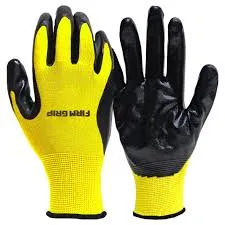safety helmet for welding factory
Safety Helmets for Welding Factory An Essential Guide
In the welding industry, safety is of paramount importance. The process of welding involves the use of high temperatures, sparks, and flying debris, all of which can pose significant risks to workers. One of the most essential pieces of personal protective equipment (PPE) in a welding factory is the safety helmet. This article will explore the vital role safety helmets play in ensuring the safety of welders, the features to look for when selecting a helmet, and best practices for their use.
The Importance of Safety Helmets
Safety helmets are designed to protect the head from various hazards encountered in a welding environment. These hazards include
1. Burns and Injuries from Sparks Welding generates intense heat and sparks, which can easily cause burns or injuries if they come into contact with the skin or hair. A quality helmet provides a shield against these flying debris and molten materials.
2. Impact Protection In a welding factory, there may be instances where heavy items can fall or roll. A robust safety helmet offers protection from potential impacts, helping to prevent serious head injuries.
3. Electrical Hazards Welders are often exposed to electrical arcs that can cause severe damage if proper protection is not worn. Helmets designed for welding come with insulation to help protect against electrical shocks.
4. Radiation Protection Welding produces harmful UV and IR radiation that can damage the skin and eyes. A welding helmet is equipped with special filters to protect against these harmful rays, allowing welders to work safely.
Features of Quality Welding Helmets
When selecting a safety helmet for a welding factory, it is crucial to look for specific features that enhance protection and comfort
1. Auto-Darkening Filter (ADF) An auto-darkening helmet automatically adjusts the lens shade depending on the brightness of the welding arc. This feature helps protect the eyes from sudden flashes of light while maintaining visibility for the task at hand.
2. Comfortable Fit Since welders can wear helmets for extended periods, a comfortable fit is essential. Look for helmets with adjustable headbands and padding to ensure long-term wear without discomfort.
safety helmet for welding factory

3. Weight and Balance A lightweight helmet reduces fatigue during long hours of work. Additionally, good balance ensures that the helmet remains stable on the head, providing uninterrupted protection.
4. Ventilation Proper ventilation is vital to ensure the welder’s comfort. Helmets with breathable designs help to reduce heat buildup inside the helmet, preventing excessive sweating and discomfort during work.
5. Lens Durability The lens must be made from durable materials to withstand impacts and scratches. A protective coating is a valuable feature that enhances the helmet's longevity.
Best Practices for Safety Helmet Use
To ensure maximum protection, welders should follow best practices when using safety helmets
1. Inspect Before Use Always inspect the helmet for any signs of damage or wear before starting work. A damaged helmet may not provide adequate protection.
2. Keep It Clean Regularly clean the helmet and lens to maintain visibility. Debris or smudges can obstruct vision and lead to accidents.
3. Replace When Necessary Helmets have a limited lifespan. If a helmet shows signs of wear or after an impact, it should be replaced to ensure continued protection.
4. Use Appropriate Lens Shade Depending on the type of welding being performed, ensure that the helmet is equipped with the appropriate lens shade to adequately protect the eyes from the specific intensity of the welding arc.
5. Follow Manufacturer Instructions Always adhere to the manufacturer's guidelines for use and care of the helmet to ensure it provides the intended protection.
Conclusion
In conclusion, safety helmets are an indispensable part of personal protective equipment in welding factories. They provide essential protection against a wide range of hazards, including burns, impacts, electrical shocks, and harmful radiation. When choosing a safety helmet, factors such as comfort, lens technology, and overall durability should be considered. By following best practices for helmet use and maintenance, welders can significantly reduce their risk of injury while performing their crucial work. Ensuring a safe working environment in welding operations is not just the responsibility of employers; it is a collective commitment to safety by every worker.
-
Top HDPE Safety Helmets - Lightweight, Durable Head Protection
NewsAug.01,2025
-
Top AI Safety Clothing with GPT-4 Turbo | Smart Protection
NewsJul.31,2025
-
Face Shield Safety Helmet with GPT-4 Turbo AI Safety
NewsJul.31,2025
-
CE Working Clothing for Construction & Welding Safety
NewsJul.30,2025
-
Premium Safety Helmet with Visor for Construction & Industrial Use
NewsJul.29,2025
-
High-Quality CE Working Clothing for Safety and Construction
NewsJul.29,2025
